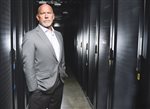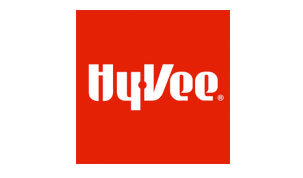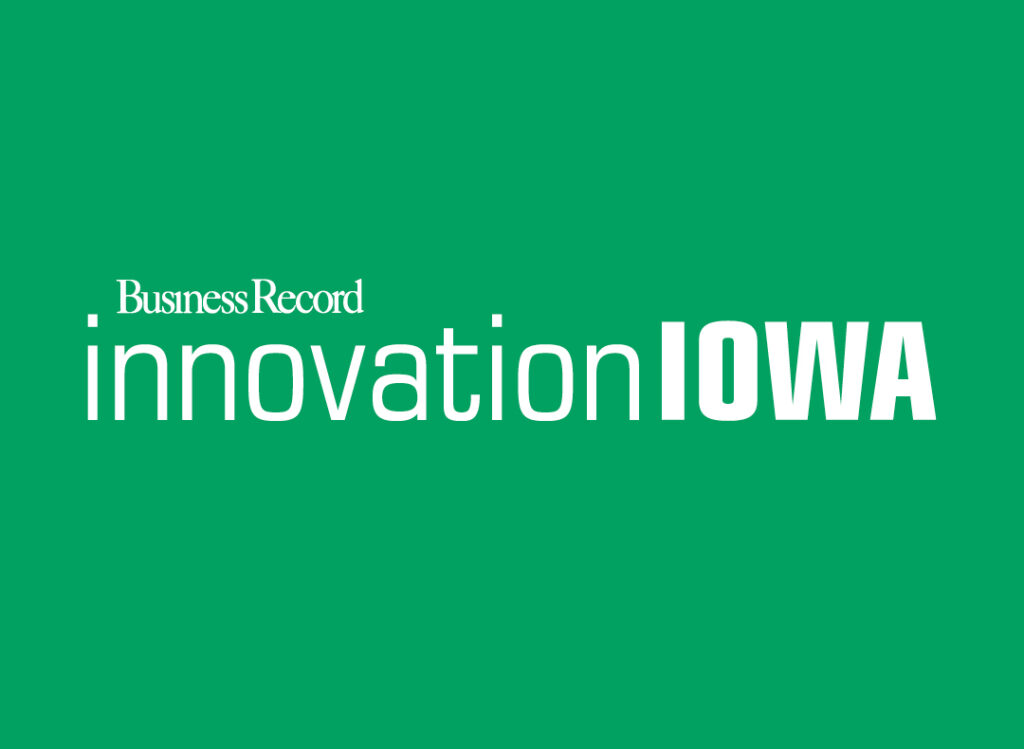Cloud or walls?
Core2Cloud debuts as LightEdge Solutions refocuses services on data centers

KATE HAYDEN Dec 11, 2018 | 9:48 pm
5 min read time
1,235 wordsBusiness Record Insider, Innovation and EntrepreneurshipHere’s what you might see in a data center built 10 years ago: a plain, concrete box of a building with an unremarkable front entrance. Especially for a small building, it’s not particularly noticeable or noteworthy to pass on the highway.
LightEdge Solutions’ newest data center, which opened this year out in Altoona, does not look like an industrial box storing cords and servers. It doesn’t particularly resemble the company’s first data center, built in 2008, either. Instead, the company took visual inspiration from one of its facility locations in the SubTropolis – the 1,100-acre manmade cave in Kansas City, Mo., that houses around 50 businesses 160 feet below the surface.
After walking through the second Altoona data center’s mine-inspired facade, visitors enter into a fiber-optic light installation mimicking a little garden, despite the windowless walls. Right angled-walls were traded in for round corners. Glass conference room walls and a welcoming kitchen reminiscent of a coworking space sit available to data center clients who need a remote working location in case of office emergencies.
“If you think back to when [the first one] was built, non-descript data centers were kind of the fashion, because people wanted a little bit of secrecy around where their data centers were,” said Jake Gibson, chief security and compliance officer at LightEdge. “Now people are proud of them, this is where our data center is.”
LightEdge’s “look” has been in flux with a number of changes affecting the company.
The new data center is a visible example — but the clearest sign of evolution comes from the debut of Core2Cloud, a new business spun out of LightEdge’s previous team of consultants dedicated to helping businesses assess and design individual data storage solutions.
With Core2Cloud’s arrival, LightEdge, which claims to have built the Des Moines metro’s first data center, is looking to the future of cloud services for businesses across the U.S.
The split on storage
Look into the IT closet at a downtown Des Moines business, and you’ll see everything Core2Cloud consultants are willing to work with: servers, switches, wireless access points — things that someone could theoretically trip over and knock out service to the rest of the office. Core2Cloud’s information technology consultants work with clients to assess, manage or update that company infrastructure.
The appeal to moving data off-site? Emergency backup. Data centers and cloud data storage give clients the peace of mind of protection in the event of natural disasters, an office fire or other interruptions; using a hybrid of both services gives companies flexibility in protecting necessary data.
At the start of 2018, worldwide spending on public cloud services and infrastructure was projected by the International Data Corp. to reach $160 billion. The U.S. is expected to make up more than 60 percent of that spending, with $97 billion on cloud services and infrastructure.
Central Iowa is loaded with data centers: In 2017, Apple Inc. acquired more than 2,000 acres of private property in Waukee to develop a private data center campus, Microsoft has two private data centers in West Des Moines, and LightEdge’s Altoona neighbor, Facebook, is adding a fourth data center to its campus. In October, Des Moines Area Community College announced its West Des Moines campus would open the Microsoft Data Center Academy for students, the fourth academy in the country.
All seven of LightEdge’s facilities — in Des Moines, Kansas City, Austin, Omaha and Raleigh — are connected via fiber optic backup lines, so the company can transfer data between two centers in case of emergencies.
“You probably don’t want to build another cage into another data center. You probably want to do it with a company that has cloud,” said Jim Masterson, CEO of LightEdge. “Customers in Des Moines, in a lot of cases, will say ‘You know what, I want disaster recovery in Omaha.’”
To get to that point, though, clients had to know what made the most sense for their business — and LightEdge’s team of consultants, who later became Core2Cloud, needed to reassure clients that consultants would not lead a business to a data center when it wasn’t necessary, or even helpful.
“That’s how a lot of our customers start, saying, ‘We want to start moving this stuff, but we have an investment in what we already have in our closets today,’” said Chad Gustafson, vice president of professional services at Core2Cloud.
“As a consultant, you want to be agnostic, you want to look for what’s the best solution for the customer,” Gustafson added.
LightEdge leaders, meanwhile, saw the business evolving from consultations to focus strongly on building and managing data centers and joint cloud-data center services for business customers. The process started over three years ago as LightEdge started assessing the company’s own capabilities.
“If it had to do with something outside the data center, it was not going to get the same attention,” Gustafson said.
Core2Cloud launched in August 2018 as an entity separate from LightEdge. Gustafson says the group sees a lot of clients moving core technology infrastructure from an IT closet or data center location to some form of a cloud-based service.
“Over time, we’re helping them either life-cycle those and help them manage those in their offices, or when it makes sense, move it into a data center, like the LightEdge data center facilities, or public cloud for that matter,” said Gustafson. “The whole team is made up of people that are skilled in a number of technology infrastructure pieces, and so we can help customers evaluate, ‘does it make sense to keep [things] where you’ve got it now?’”
Different situations, different solutions
Among the streams of data humming in LightEdge servers are clients in government, healthcare, finance, insurance, manufacturing, distribution and e-commerce.
Globally, manufacturing is predicted to lead all industries on public cloud spending of $19.7 billion, according to the IDC.
“There’s definitely business situations where that IT has to stay on site. Manufacturing is a good example, healthcare to some extent, there’s always going to be some wireless. … You’ve always got to have wireless access points,” Gustafson said.
Customers seeking a roadmap for their IT needs bring Core2Cloud on to assess current conditions and plan for the future.
“We work with customers very early on. And some of them [that] are very late to the game are just now starting to realize that they’ve got data they need to protect, and maybe they haven’t really taken advantage of all the capabilities of today,” Gustafson said. “Some customers are very savvy with their technology and their security presence, and some are just starting to take a little more notice.”
“It’s interesting. There’s more and more businesses that are looking and saying, ‘is IT core to our business?’ Not everybody wants to continue to make the investment in IT people in their business,” he added. “You don’t always get to finish the way you want to, you don’t always get to start where you want to,” he said. “The exciting thing is we’re always jumping into new clients, new problems … and so it’s kind of always evolving.”
Core2Cloud now has 18 employees and focuses largely on Iowa, although employees are based in Missouri and Omaha, and several clients have national or global locations outside the state.
“You go into the cloud and there’s so many options it’s overwhelming,” Gustafson. “The right answer is different for every situation.”











